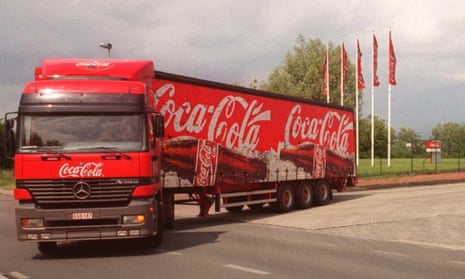Innovation can take many forms, and for Coca-Cola that can mean ditching its iconic red trucks for donkeys and bicycles.
David Butler, vice president for innovation and entrepreneurship at Coca-Cola, gives this example to illustrate the point that however small or large a company, it is vital to remain flexible.
“I was in Ho Chi Minh City recently and the traffic was so terrible it took two and a half hours to cross the city,” he says. Big trucks would be no use, as they would have got stuck in the congestion.
“Donkeys, bicycles and boats can be more effective. There’s no one way of doing things. It can be a challenge getting products on to the shelf – we’re flexible as to how we get them there.”
Butler, who took part in a Guardian Small Business panel discussion on the power of brands, says that while it is important companies do not play around with the foundation of what makes their brand unique, there are always fluid elements, especially when trying to break into new markets.
That balance is especially important to get right at Coca-Cola, since so much depends on brand recognition and loyalty. The company is listed by Forbes as the fourth most valuable brand in the world and a study by Steel Media found its logo is recognised by 94% of the world’s population.
Butler, who was addressing participants of the Guardian Small Business Trade Mission to Atlanta, says the most challenging part of his role is keeping the company agile. “All big companies have scale but don’t have agility,” he says. “We have struggled with that.”
Two years ago Butler launched Coca-Cola Founders, a venture platform that partners with entrepreneurs and takes a minority stake once the businesses are successful.
He enjoys the cut and thrust of working with startups and says a weakness he often sees is that entrepreneurs often don’t spend enough time developing their brand. “They focus on the product but the storytelling around that product is just as important,” he says.
If a small business doesn’t have that skillset in-house, Butler says they should go and get it. One option is to “find a brand you admire and find out who does the job in that company”.
One of the most useful books Butler has read is The Lean Startup by Eric Ries, which emphasises “maximum speed and minimum waste”. He recently published his own book with co-author Linda Tischler, Design to Grow: How Coca Cola learned to combine scale and agility (and how you can too).
What is his favourite UK brand? “The Langham Hotel in London. The service is exceptional, the location is superb. And there’s a rich history behind the brand.”
Butler joined Coca-Cola in 2004 as the company’s first vice-president of global design and took up his current role two years ago.
Sign up to become a member of the Guardian Small Business Network here for more advice, insight and best practice direct to your inbox.

Comments (…)
Sign in or create your Guardian account to join the discussion